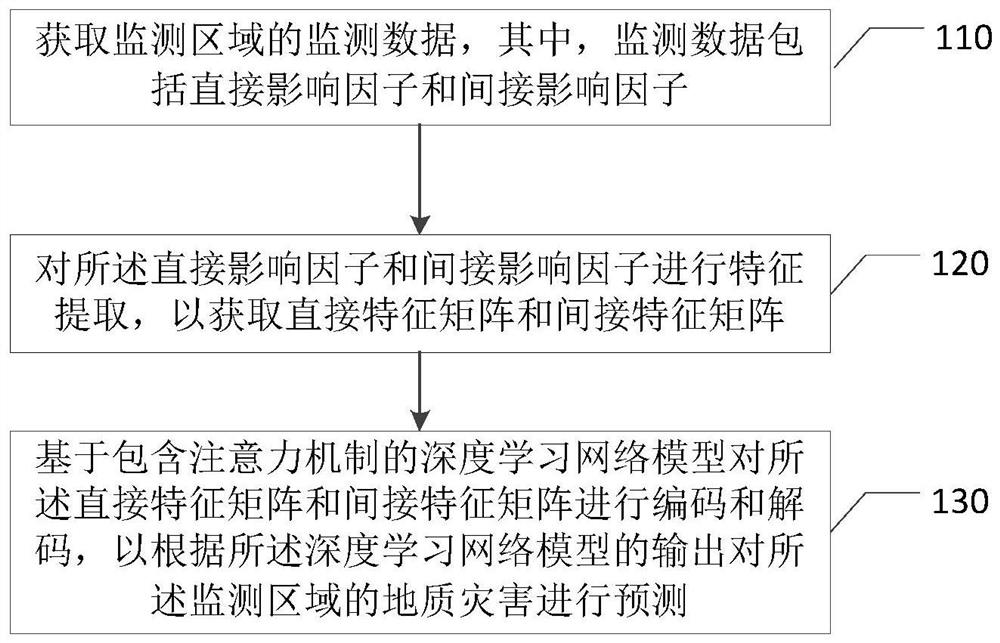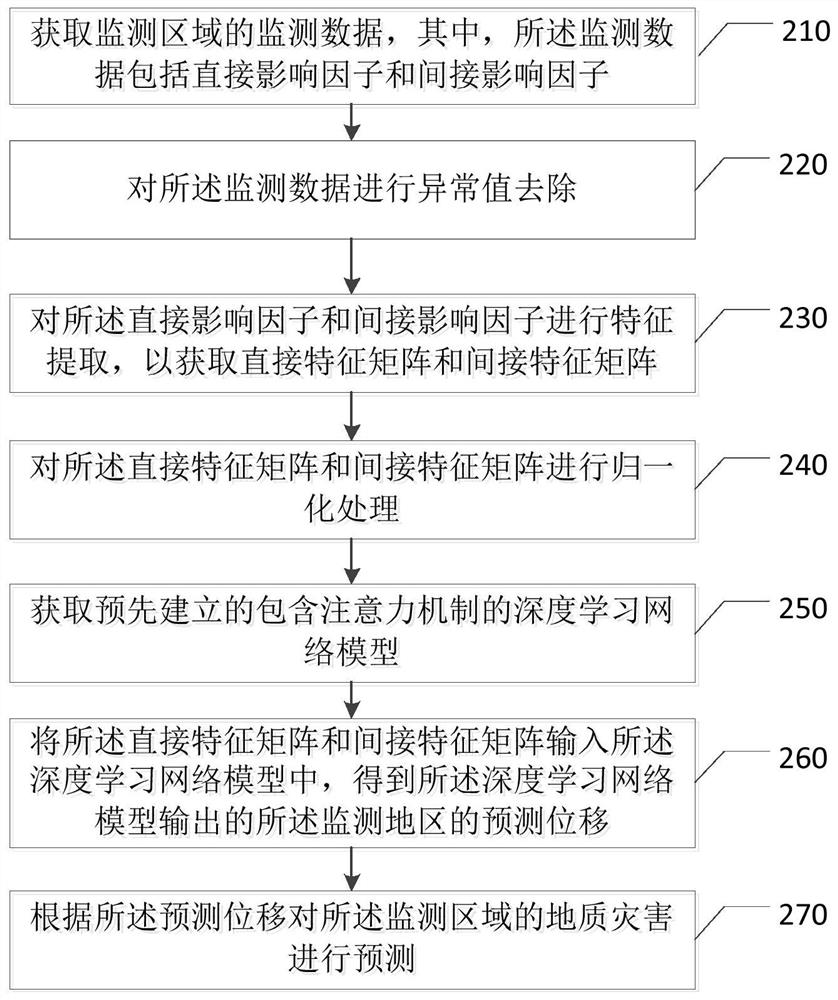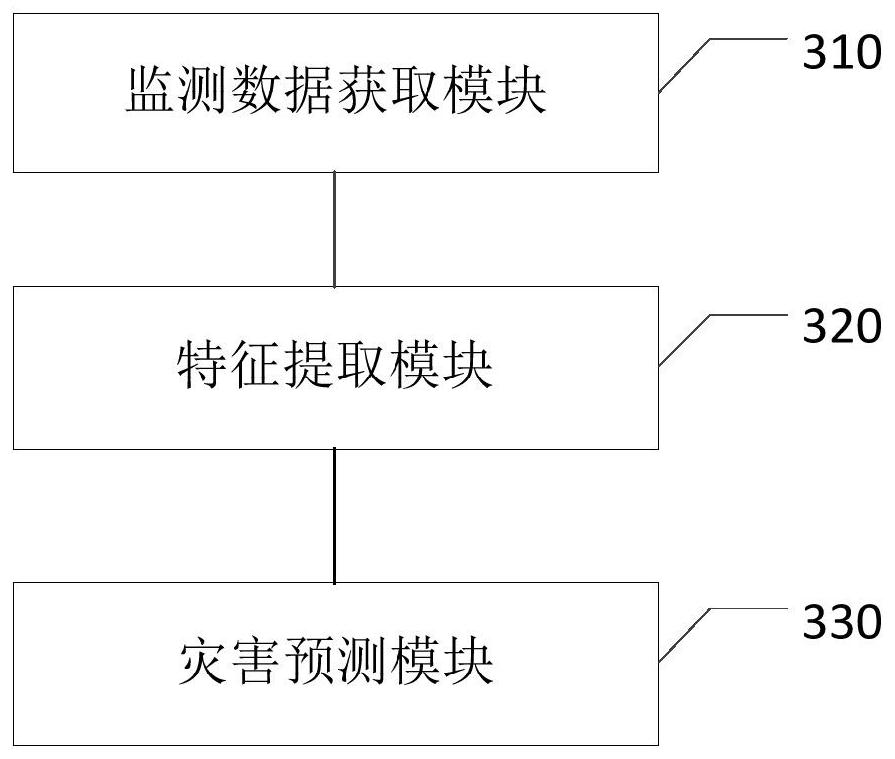A prediction method, device and equipment for geological disasters
A technology for geological disasters and prediction methods, applied in the field of data processing, can solve the problems of noise interference, violent fluctuation of monitoring values, difficulty in real-time and accurate prediction, etc., and achieve the effects of high speed, strong robustness and high prediction accuracy.
- Summary
- Abstract
- Description
- Claims
- Application Information
AI Technical Summary
Problems solved by technology
Method used
Image
Examples
Embodiment 1
[0025] figure 1 It is a flow chart of a method for predicting geological disasters provided in the first embodiment of the present invention. This embodiment can be applied to the situation of predicting geological disasters. The method can be executed by a geological disaster prediction device. The device can use software and implemented in hardware, such as figure 1 As shown, the method specifically includes the following steps:
[0026] Step 110 , acquiring monitoring data of the monitoring area, wherein the monitoring data includes a direct impact factor and an indirect impact factor.
[0027] The monitoring area may be a geological disaster-prone area or a set area, and may include one or more target areas or monitoring points. Geological disasters include landslides, collapses, soil erosion, salinization, land subsidence, earthquakes, debris flows, etc., and refer to natural disasters that are mainly caused by geodynamic activities or abnormal changes in the geological...
Embodiment 2
[0044] figure 2 This is a flowchart of a method for predicting geological disasters provided in the second embodiment of the present invention. This embodiment is a further refinement and supplement to the previous embodiment. The method for predicting geological disasters provided by the embodiment of the present invention further includes: Perform outlier removal on the monitoring data and normalize the direct feature matrix and the indirect feature matrix.
[0045] like figure 2 As shown, the method includes the following steps:
[0046] Step 210: Acquire monitoring data of the monitoring area, wherein the monitoring data includes a direct impact factor and an indirect impact factor.
[0047] Exemplarily, it is assumed that the monitoring data is: X=[X (1) , X (2) , X (3) …X (n) ], where X (c) , c=1, 2, 3...n, is an m-dimensional column vector, [X (1) , X (2) , X (3) ] represents the direct impact factor, [X (4) ,...X (n) ] indicates indirect influence factors...
Embodiment 3
[0097] image 3 is a schematic diagram of a geological disaster prediction device provided in the third embodiment of the present invention, such as image 3 As shown, the device includes: a monitoring data acquisition module 310 , a feature extraction module 320 and a disaster prediction module 330 .
[0098] Among them, the monitoring data acquisition module 310 is used to acquire monitoring data of the monitoring area, wherein the monitoring data includes direct influence factors and indirect influence factors; the feature extraction module 320 is used to perform the analysis on the direct influence factors and indirect influence factors. feature extraction to obtain direct feature matrix and indirect feature matrix; disaster prediction module 330 for encoding and decoding the direct feature matrix and indirect feature matrix based on a deep learning network model including an attention mechanism to The output of the learning network model predicts the geological hazard in...
PUM
 Login to View More
Login to View More Abstract
Description
Claims
Application Information
 Login to View More
Login to View More - R&D
- Intellectual Property
- Life Sciences
- Materials
- Tech Scout
- Unparalleled Data Quality
- Higher Quality Content
- 60% Fewer Hallucinations
Browse by: Latest US Patents, China's latest patents, Technical Efficacy Thesaurus, Application Domain, Technology Topic, Popular Technical Reports.
© 2025 PatSnap. All rights reserved.Legal|Privacy policy|Modern Slavery Act Transparency Statement|Sitemap|About US| Contact US: help@patsnap.com



